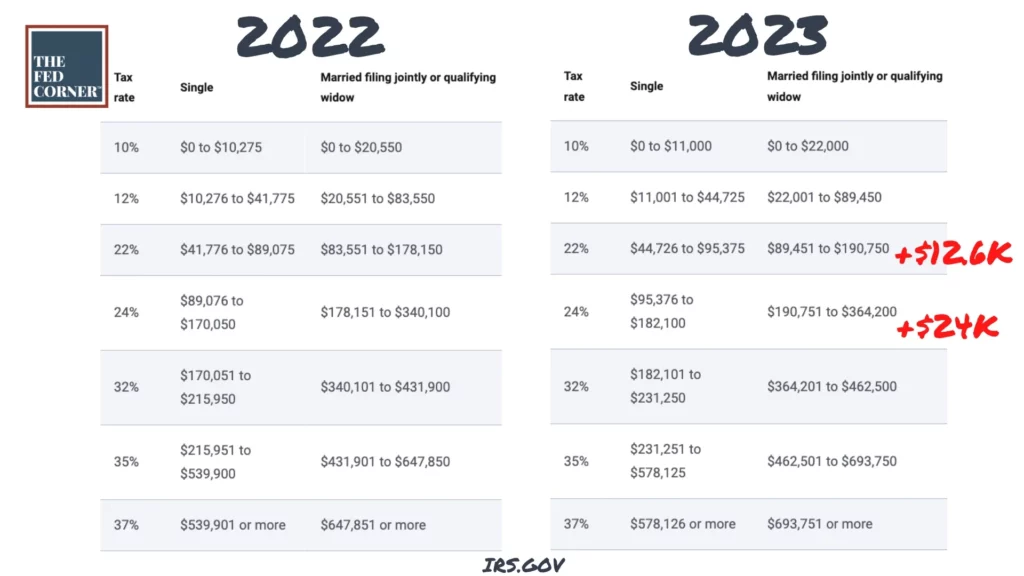3 Ways Federal Employees Can Benefit from Inflation
The impact of the highest-in-four-decades inflation has been widespread. Costs for just about everything have increased, market volatility is back, interest rates have increased, and the economic cycle has finally moved into a brand-new season after an extensive bull run.
But with all the doom, gloom, and balloons on the news, we wanted to focus on some of the positive aspects that isn’t discussed by financial media. Frankly, good news just doesn’t sell as well as bad news.
But we’re here to change that, because there are some little-known ways you can take advantage of high inflation, and in this piece, we’ll discuss three of these methods so that you can continually maximizing your financial position.
Max The Bracket
One of the reasons there are hidden opportunities within a high inflationary environment is because tax laws were adjusted as a result.
Income tax brackets are all getting pushed to higher levels from 2022’s, and that creates some serious planning opportunities.
For example: in 2022, the 24% bracket for married-joint filers topped out at $340,100. It now goes to $364,200 — an increase of $24K. That’s $24,000 more that you get to pay less in taxes in 2023 if you did a Roth conversion on this money.
The next bracket after the 24% jumps to 32%. Imagine how much you can save in taxes if you used this strategy over multiple years.
Not to mention, the current tax laws under the Tax Cuts and Jobs Act (TCJA) is set to sunset in 2025. This means that if there are no new tax laws created, taxes will go back up to the higher pre-2018 levels prior to when the TCJA rule became law.
Higher TSP Contribution Limits
There are two additional changes caused by high inflation that can benefit federal employees and their families.
Retirement accounts have received a healthy bump to their contribution limits. Active federal employees can contribution a total of $37,500 per year in their retirement accounts.
Inflation has brought adjustments to IRA contributions limits to $7,500 per year for anyone over 50, and to retirement account contribution limit to $30,000 per year for 50+. In fact, new laws may increase this even further.
Doing both means you can shovel away as much as $37,500 per year to be invested and growing for you. If your spouse works too, that’s $75K for the year between the two of you. Imagine the impact to your financial future if you continue this for several more years.
If you plan to make IRA contributions, just be sure you’re aware of IRA deductibility rules. Depending on your income and work status, you may be phased out of actually deducting it from your savings, but you can still make the contribution, then possibly “back-door” it into a Roth.
In addition, by now most people are aware that I-Bonds were paying almost double digits last year, and years of high inflation allow you to capitalize on higher yielding bonds.
Higher Standard Deductions
Another way federal employees can benefit is from the increase to the standard deduction. We encourage clients to pay close attention to their tax deductions for this year.
It is now almost $28,000 for married filing joint, and if you’re over 65 it’s over 30K. If you’ve always filed your own taxes and itemized because perhaps your mortgage is big enough or you have enough deductions, you might want to make sure that this is still the case. We’ve found many families can take advantage of the standard deduction while it still remains high.
However, if you use the bunching techniques that we’ve discussed in other pieces, then you may still want to itemize. I suggest working with an accountant if this is the case.
These strategies may not seem like much individually, but if you do them annually and combined them with other strategies we’ve discussed, you can truly give yourself a better chance of achieving the future you want. After all it’s not just your money, it’s your future.





